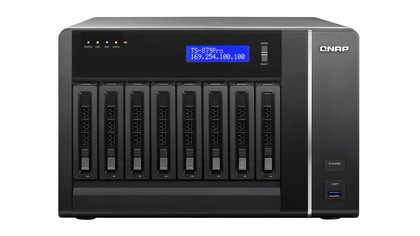Sharing is good. Networks were created so people could share and communicate with each other, and network attached storage (NAS) provides an extra option that can often increase the benefits.
NAS refers to any device dedicated to storing files that can be accessed over a network by a group of users, usually through a number of standard network protocols.
It may sound simple, but it amounts to a full computer system capable of handling multiple high speed file requests, managing a file system with all of its oddities, and dealing with transmission control protocols (TCPs) and services you need to throw at it. All that demands a basic computer with a processor, memory, ports and OS connected to a bank of hard drives and networked via a LAN controller and sometimes wireless.
This means that a NAS has a specification beyond its storage capacity. The processor, for example, will dictate the maximum speed and number of requests that the device can handle. NAS devices can be based on everything from low power ARM or Intel Atoms processors to those for a full desktop, depending on the class of the device.
NAS models come in basic sizes based on the number of drives that can be installed. Home and small business models will only use a single internal drive, which limits capacity and does not provide the security that can be obtained with multiple drives when some are redundant.
The next step up is to dual-drive models. These can work as storage and, more importantly, as two mirrored drives storing identical data, so if one drive fails no data is lost.
Small and midsized businesses are more likely to need a redundant array of independent drives (RAID), using four or more to increase their storage capacity and provide data integrity through a number of error checking schemes. If one or more drives fail the RAID can continue to function without interruption to services, while the failed drives are replaced. The number of drives required increases as the specification increases.
Get daily insight, inspiration and deals in your inbox
Sign up for breaking news, reviews, opinion, top tech deals, and more.
At this level you can expect to see multiple gigabit LAN ports, which can be used for load balancing, redundancy if a port falls over or split network domains. It is also possible, if the business has the right infrastructure in place, to provide options for a 10GbE Ethernet through add-in cards or by default.
Moving beyond these standalone NAS boxes, larger businesses will be looking at rack based systems and enterprise level scale-out NAS solutions. These effectively virtualise the NAS storage as a pool, so it is easier to maintain and update multiple racks without worrying about the stored data.
Back-up power supplies and batteries, alongside multiple gigabit and 10GbE port adaptors can all be offered at this level. Storage on racks can reach the 1,000Tb levels if required.
A NAS will provide a wide number of services, ranging from standard network connectivity with support for standard file sharing protocols to internet services like FTP and HTTP. Back-up services are another core feature, and more advanced systems support iSCSI protocols that extend file transfer commands over an IP network for a SAN, and certification for virtual environments such as Microsoft Hyper-V help expand a growing SMB.
1. QNAP TS-879 Pro

Designed for the larger end of the SMB market, the QNAP TS-879 Pro is an accomplished eight bay NAS.
It has eight hotswap bays for flexibility and an Intel Core i3 processor, supports the latest 6Gbps SATA III interface, offers a pair of USB 3.0, four USB 2.0, two eSATA ports and a PCIe slot. This last item supports a dual-port 10GbE add-in card or additional dual-port gigabit adaptor, running alongside the existing dual-port gigabit LAN port.